Simple Steps to Strengthen Customer Loyalty with Retention Metrics
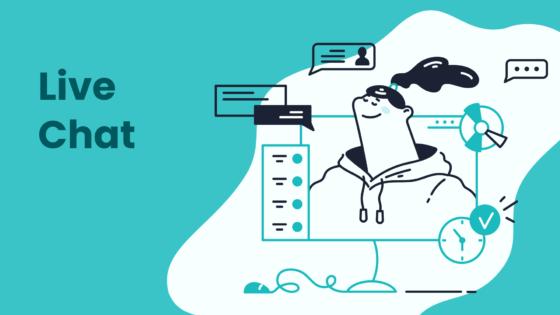
Using customer retention KPIs is a simple, effective way to build customer loyalty. Many businesses struggle to keep loyal clients, even when offering a loyalty program. The cost to gain a new client can be up to 25 times higher than retaining an existing one. Sobot helps brands track these KPIs, making client loyalty measurable and actionable. Companies across industries see profits rise by up to 95% with just a 5% increase in retention. The following table shows why client loyalty matters for every business:
| Statistic / KPI | Numerical Value / Range | Business Implication |
|---|---|---|
| Profit Increase from 5% Retention Gain | 25% to 95% increase | Even a small retention improvement can dramatically increase profits. |
| Cost Ratio: New vs. Retained Customer | 5 to 25 times more expensive to acquire | Emphasizes the financial advantage of focusing on retention over acquisition. |
| Repeat Purchase Rate (E-commerce) | 20% to 30% | Indicates customer satisfaction and loyalty in e-commerce. |
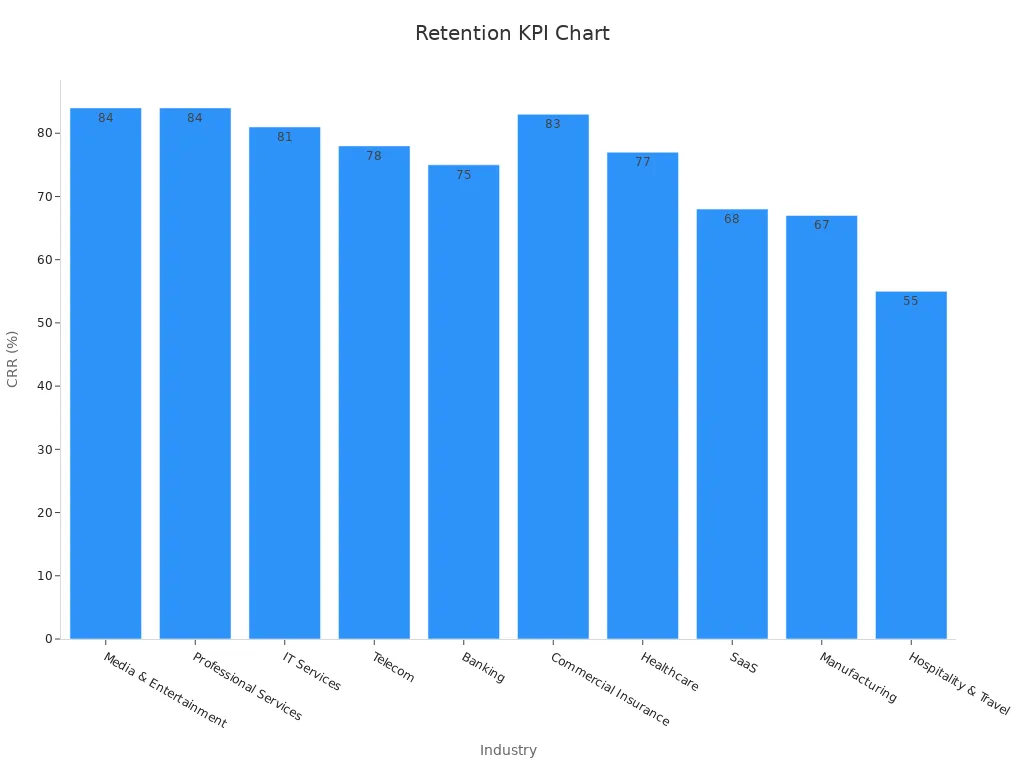
Tracking customer retention KPIs helps businesses of every size improve client loyalty, boost customer loyalty, and see real results from every loyalty program.
Retention KPIs and Customer Loyalty
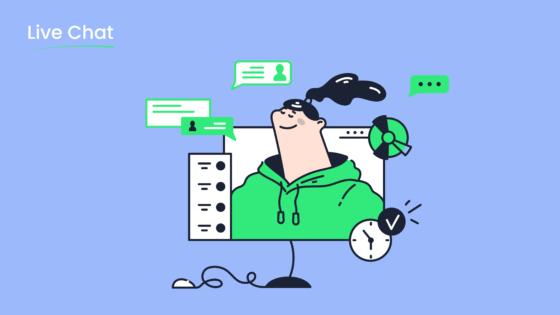
What Are Retention KPIs?
Retention KPIs are measurable values that show how well a business keeps its customers over time. These customer retention metrics help companies understand if clients stay loyal or leave. Businesses use these numbers to track progress and spot areas for improvement. The most common customer retention KPIs include retention rate, churn rate, customer lifetime value, and net promoter score. Each metric gives a different view of customer loyalty and satisfaction.
| Metric Name | Definition | Importance |
|---|---|---|
| Customer Retention Rate (CRR) | Percentage of customers who stay with the company over a period. | Shows loyalty and business health. |
| Customer Churn Rate (CCR) | Percentage of customers who stop using the service in a set time. | Reveals loss rate and possible issues. |
| Customer Lifetime Value (CLV) | Total revenue a customer brings during their relationship with the company. | Guides investment in retention strategies. |
| Net Promoter Score (NPS) | Measures how likely customers are to recommend the company on a 0-10 scale. | Reflects loyalty and satisfaction. |
| Customer Satisfaction Score | Customer happiness rating, often from surveys. | Measures experience quality. |
Why Customer Retention KPIs Matter
Customer retention KPIs matter because they directly affect business growth and profit. Companies that focus on customer retention metrics see higher loyalty and lower costs. Improving customer retention by just 5% can boost profits by 25% to 95% (Harvard Business Review). Retained customers spend more and often refer others. Tracking retention KPIs helps businesses spot trends, improve service, and build stronger relationships.
- Recurring customers spend more per order and show greater loyalty.
- Retention costs less than acquiring new customers.
- Key retention KPIs like lifetime value and repeat purchase rate help measure and improve loyalty.
- Longer customer loyalty increases total value and ROI.
Sobot’s Approach to Retention KPIs
Sobot uses advanced tools to help businesses track and improve retention KPIs. The Sobot Live Chat platform collects customer retention metrics across all channels, making it easy to measure satisfaction and loyalty. Sobot’s analytics dashboard tracks over 150 indicators, including customer satisfaction metrics and net promoter score. This data helps companies like OPPO boost their retention rate and customer loyalty. Sobot’s solutions allow brands to act quickly on insights, personalize service, and increase repeat purchases.
Key Customer Retention KPIs
Retention Rate
Retention rate measures the percentage of customers who stay with a business over a set period. This customer retention kpi helps brands understand loyalty and the effectiveness of their retention kpis. Companies with high retention rates often see greater profits. For example, a 5% increase in retention can boost profits by 25% to 95%. Many industries track this metric to compare performance. Media and professional services have the highest retention rates at 84%, while hospitality and travel see lower rates at 55%. The table below highlights recent trends:
| Trend/Statistic Description | Value/Detail |
|---|---|
| Profit increase from 5% retention rate increase | 25% to 95% |
| Industry with highest retention rates | Media (84%) |
| Industry with lowest retention rates | Hospitality (55%) |
| Repeat customers spend more | 67% more |
Churn Rate
Churn rate, or customer churn rate, shows the percentage of customers who leave during a specific time. This retention kpi is critical for identifying issues in service or product quality. High churn can lead to lost revenue and lower customer satisfaction. For example, Netflix lost 4% of its subscribers, resulting in an $8 million monthly revenue loss. SaaS companies aim for a monthly churn rate between 3% and 5%. Sobot’s analytics help businesses monitor churn and act quickly to improve retention kpis.
Customer Lifetime Value
Customer lifetime value (CLV) estimates the total revenue a customer brings over their relationship with a brand. This customer retention kpi guides investment in marketing and support. Companies use several methods to calculate CLV, such as simple averages or predictive analytics. High customer lifetime value means customers buy more often and stay longer. Sobot’s unified dashboard tracks CLV, average purchase frequency, and other retention kpis to help brands maximize value.
| CLV Calculation Method | Description | Best Use Case |
|---|---|---|
| Simple CLV | Uses averages for quick estimates | Small businesses |
| Gross Margin CLV | Includes cost of goods sold | Profitability analysis |
| Predictive CLV | Uses machine learning for future forecasts | Large datasets, advanced users |
Net Promoter Score
Net Promoter Score (NPS) measures how likely customers are to recommend a brand. This retention kpi is popular for tracking customer satisfaction and loyalty. However, NPS alone may not predict business growth or customer lifetime value. Studies show only a 54% correlation between NPS and retention. Sobot’s satisfaction surveys combine NPS with other customer retention kpis for a complete view of customer satisfaction.
Repeat Purchase Rate
Repeat purchase rate tracks the percentage of customers who buy more than once in a given period. This retention kpi highlights loyalty and the success of engagement strategies. Brands with high repeat purchase rates often see higher customer lifetime value and average purchase frequency. Tracking tools like Sobot Live Chat and analytics dashboards help segment buyers and monitor trends. The chart below shows how repeat purchases increase after each transaction:
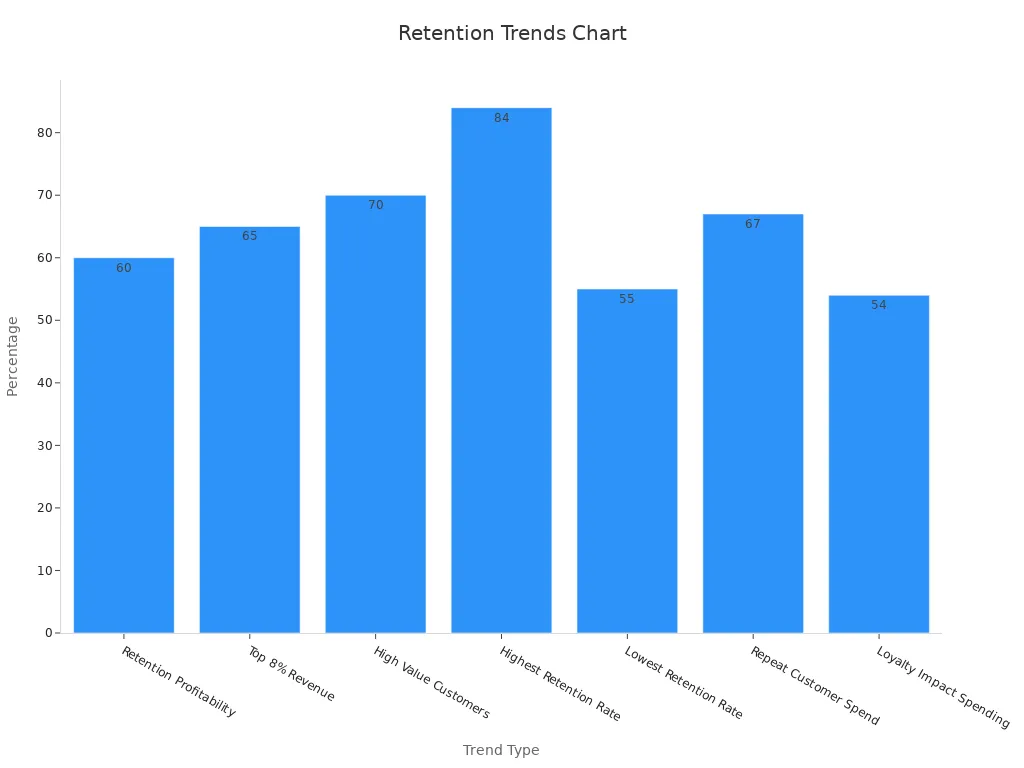
Measure Retention KPIs
Data Collection Basics
Accurate measurement of retention kpis starts with a strong data collection process. Companies should follow these steps to build a reliable foundation for tracking customer retention metrics:
- Research industry standards to set clear success criteria for retention kpis.
- Establish baseline data to compare future results and measure progress.
- Define the specific information needed, such as customer retention metrics, purchase history, and feedback.
- Outline the data collection process, including methods like surveys, interviews, and automated tracking.
- Assign team members to manage data collection and ensure consistency.
Businesses often use both quantitative and qualitative data. They gather information from CRM systems, analytics platforms, and customer surveys. Regular data collection schedules help maintain up-to-date retention kpis. Clear reporting with visualizations makes it easier to communicate results to stakeholders.
Using Sobot Live Chat Analytics
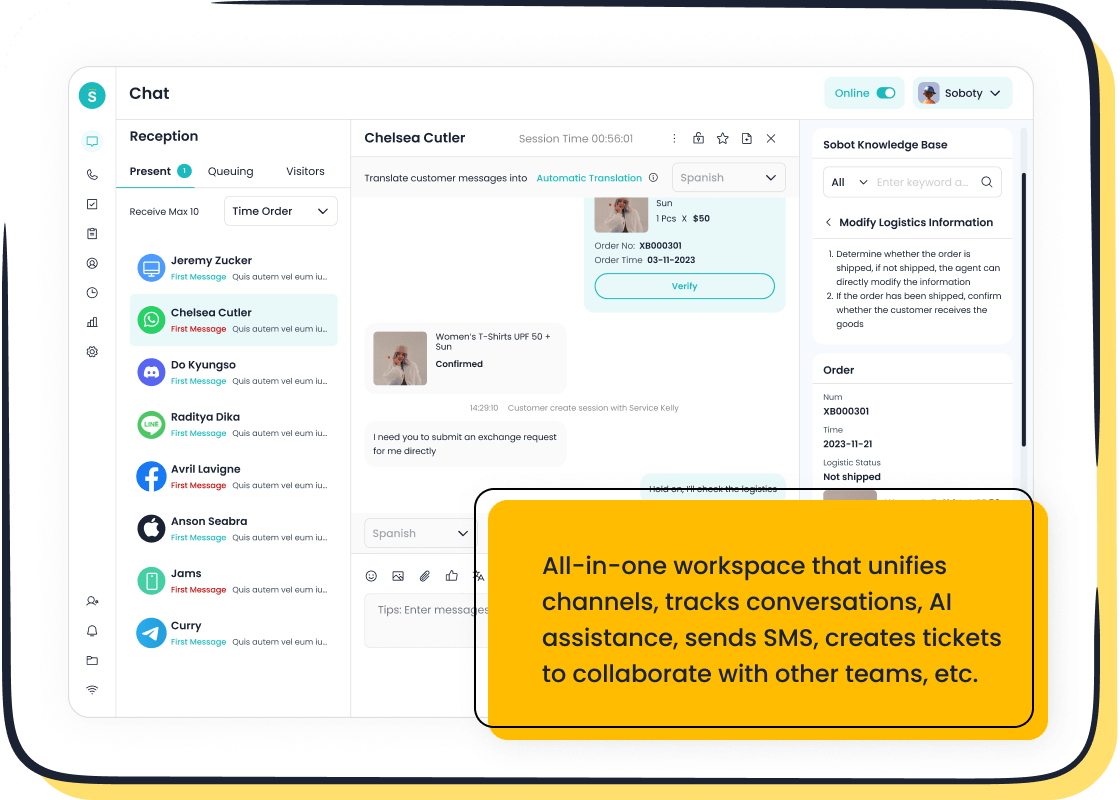
Sobot Live Chat provides a powerful platform for tracking retention kpis across all customer touchpoints. The system evaluates over 150 indicators, including customer retention metrics like satisfaction scores and repeat purchase rates. Sobot’s unified dashboard collects data from websites, apps, and social media channels, giving teams a complete view of customer interactions.
Tip: Sobot Live Chat’s built-in analytics allow businesses to spot trends in retention kpis quickly and take action to improve loyalty.
With automated data collection and customizable reports, Sobot helps brands like OPPO monitor retention kpis efficiently. This approach supports data-driven decisions and continuous improvement.
Setting KPI Targets
Setting effective targets for retention kpis requires careful analysis. Teams should:
- Analyze current performance to set realistic, achievable goals for retention kpis.
- Involve stakeholders in the process to ensure alignment with business objectives.
- Use industry benchmarks to compare retention kpis and identify areas for growth.
- Apply frameworks like SMART (Specific, Measurable, Attainable, Relevant, Time-Bound) to define clear targets.
- Break down long-term goals into short-term, measurable steps.
Regular reviews and adjustments keep retention kpis relevant and actionable. By comparing results with industry standards, companies can refine their strategies and drive better outcomes.
Interpret and Act on Retention KPIs
Spotting Trends
Spotting trends in retention kpis helps businesses understand shifts in customer loyalty and the effectiveness of their loyalty program. Companies collect time series data, such as monthly retention rates, to track changes over time. Data visualization tools, like line charts and graphs, reveal patterns in customer engagement rate and customer lifetime value. Statistical methods, including moving averages and regression analysis, quantify these trends. Advanced models, such as ARIMA, forecast future changes in retention kpis. By examining historical data, businesses can identify seasonal spikes or declines in customer engagement patterns. Sobot’s analytics dashboard simplifies this process, allowing teams to visualize and interpret retention kpis quickly.
Customer Segmentation
Customer segmentation divides customers into groups based on behavior, purchase history, and engagement with a loyalty program. Techniques like clustering and Non-negative Matrix Factorization analyze multidimensional data to create accurate customer clusters. These clusters highlight differences in customer lifetime value and retention kpis. For example, hierarchical clustering can uncover rare patterns, while NMF focuses on major trends. Segmenting customers enables businesses to tailor customer retention strategies and improve customer engagement rate. Sobot’s platform supports continuous, data-driven segmentation, helping brands personalize offers and increase loyalty program effectiveness.
Applying Insights
Applying insights from retention kpis leads to actionable improvements. For instance, tracking first contact resolution rates may reveal that lower rates occur on weekends. Management can respond by adjusting staffing or providing targeted training. The table below shows how businesses use retention kpis to drive results:
| KPI Name | Description | Action to Improve Retention |
|---|---|---|
| First Contact Resolution | % of issues resolved in first interaction | Coaching and process improvements |
| Customer Satisfaction | Customer rating of support experience | Targeted training and feedback |
| Repeat Contact Rate | Frequency of repeat inquiries for same issue | Process improvements to resolve issues faster |
| Customer Lifetime Value | Total revenue from a customer over their lifecycle | Personalized loyalty program offers |
| Retention KPIs | Metrics tracking customer loyalty and engagement | Data-driven adjustments to customer retention strategies |
Sobot’s solutions help brands act on these insights, leading to higher customer lifetime value and stronger loyalty program results.
Improve Retention KPIs
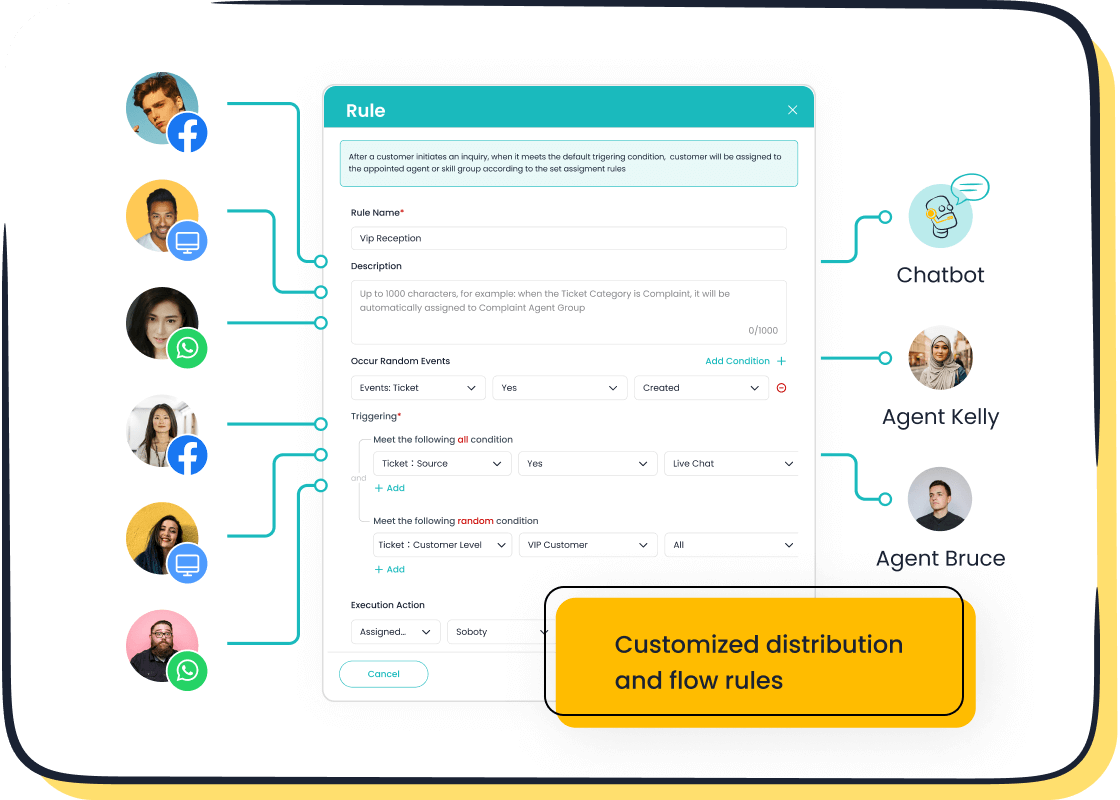
Personalize Onboarding
Personalized onboarding stands as a powerful driver for client loyalty and improved retention kpis. Companies that tailor onboarding experiences see remarkable results:
- Organizations with strong onboarding processes experience 50% greater new hire retention.
- Personalized onboarding increases user retention by 40% compared to generic flows.
- Structured onboarding boosts retention by 50%.
- Personalized onboarding plans improve new hire retention by 82% and productivity by over 70%.
These numbers show that onboarding personalization not only increases user engagement but also reduces turnover and boosts customer satisfaction. Sobot Live Chat enables businesses to deliver tailored onboarding journeys by segmenting users and automating welcome messages across channels. This approach helps brands build trust from the first interaction, laying a solid foundation for long-term client loyalty.
Loyalty Program Strategies
Effective loyalty program strategies play a central role in driving customer loyalty and maximizing retention kpis. Leading brands like Starbucks, Amazon Prime, and Sephora have demonstrated that personalized offers, exclusive access, and community engagement can transform occasional buyers into loyal advocates. For example, Starbucks tracks purchase history to tailor rewards, while Amazon Prime integrates fast shipping and exclusive content to keep members engaged.
Key metrics for evaluating loyalty programs include Customer Lifetime Value (CLV), Retention Rate, Customer Acquisition Cost (CAC), and Customer Churn Rate. These indicators help businesses measure the impact of their loyalty program on client retention strategies and user engagement. Sobot’s marketing solution supports the creation of targeted campaigns and personalized offers, helping brands increase reward redemption rate and foster deeper connections with their audience.
Tip: Brands that combine loyalty programs with personalized messaging see higher customer satisfaction and a stronger customer loyalty program impact.
Enhance Customer Support with Sobot
Customer support quality directly influences retention kpis and client loyalty. Sobot Live Chat provides omnichannel support, AI-powered automation, and real-time analytics to streamline service delivery. Companies using Sobot tools report a 35% increase in productivity, a 60% reduction in agent workload, and a 93% customer satisfaction score. OPPO, a global smart device leader, achieved a 94% positive feedback rate and a 57% increase in repurchase rate after integrating Sobot’s chatbot and ticketing system.
| Metric / Outcome | Value / Result | Description / Impact on Customer Support and Retention |
|---|---|---|
| Customer Satisfaction (OPPO) | 93% CSAT | High satisfaction score demonstrating effective support |
| Agent Workload Reduction | 60% | Less burden on support agents, enabling faster and better service |
| Net Promoter Score (NPS) | +35% | Enhanced customer loyalty and likelihood to recommend, linked to retention |
| Resolution Time | Under 1 minute | Fast issue resolution through AI-human collaboration, improving customer experience |
| Omnichannel AI Agents | 24/7 service availability | Continuous support availability, increasing customer satisfaction and retention |
Sobot’s unified workspace and automated workflows ensure that every customer receives timely, personalized assistance, which strengthens user engagement and drives client loyalty.
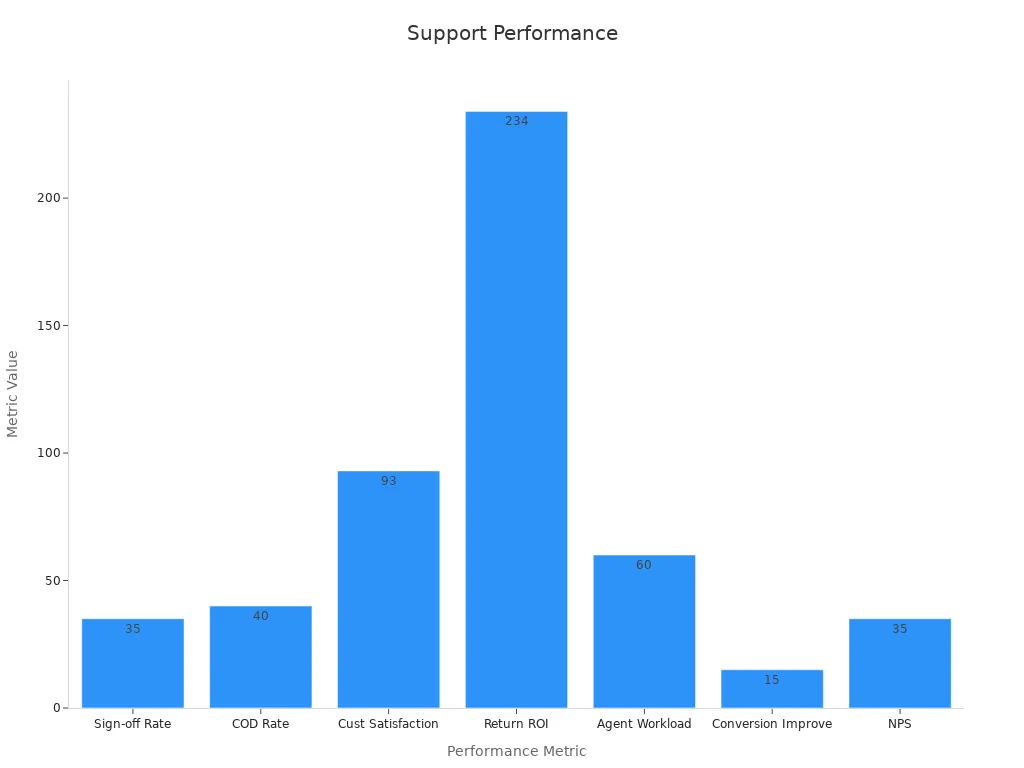
Reward and Re-engage
Reward and re-engagement strategies are essential for maintaining high retention kpis and maximizing the effectiveness of any loyalty program. Brands that offer tiered rewards, discounts, and exclusive access see significant improvements in customer engagement and reward redemption rate. For example, a 5% increase in customer retention can boost profits by 25% to 95%. Starbucks uses tiered rewards to incentivize higher spending, while multi-channel communication keeps dormant users engaged.
| Metric/Example | Numerical Evidence/Impact |
|---|---|
| Increase in customer retention | 5% increase in retention can boost profits by 25% to 95% |
| Starbucks loyalty program | Tiered rewards incentivize higher spending and improve redemption rates |
| Reward program benefits | Rewards like discounts, free products, exclusive access increase customer engagement and retention |
| Re-engagement strategies | Multi-channel and personalized communication improve retention |
Sobot’s marketing solution empowers brands to automate reward campaigns, track reward redemption rate, and personalize re-engagement messages. These features help businesses maintain strong client loyalty and ensure that every customer feels valued.
Review and Optimize Regularly
KPI Review Frequency
Successful businesses set a regular schedule to review retention kpis. They define the measurement period, choosing monthly, quarterly, or annual reviews based on their business model. Many SaaS companies check retention kpis at least once a month, while some monitor product usage daily or weekly. Teams select retention kpis that match their goals, then use CRM or analytics tools like Sobot Live Chat to gather data. They establish benchmarks by researching industry standards and set realistic targets. Segmenting retention kpis by customer group, such as pricing tier or user persona, helps uncover trends. Regular review meetings allow teams to analyze retention kpis and adjust strategies quickly.
Tip: Consistent review of retention kpis ensures that businesses spot issues early and respond with data-driven solutions.
A/B Testing and Feedback
A/B testing helps companies optimize retention kpis by comparing different strategies. Teams set clear goals for each test, such as increasing engagement or reducing churn. They use tools like feedback widgets to collect real-time user opinions on page variants. Heatmaps and session replays show how users interact with each version, revealing what works best. Combining feedback with A/B testing frameworks allows teams to refine their approach and improve retention kpis. For example, a SaaS company improved onboarding through A/B testing, boosting engagement by 30% and reducing drop-off by 20%. Iterative testing and feedback loops help businesses adapt quickly and keep retention kpis moving in the right direction.
Adjusting Strategies
Companies achieve the best results when they adapt strategies based on retention kpis. They use data-informed segmentation to identify high-risk clients and target retention efforts. Empowering agents with better tools, like Sobot’s unified workspace, leads to faster issue resolution and higher satisfaction. Proactive outreach and continuous dialogue maintain engagement. Predictive analytics flag at-risk clients, while real-time monitoring tracks retention kpis such as churn rate and client lifespan. Businesses compare actual results with benchmarks and decide whether to continue, pivot, or change strategies. This approach has led to a 40% increase in client retention and a 35% rise in satisfaction for many organizations.
Tips and Pitfalls
Quick Tips for Success
- Define a clear measurement period for each loyalty program, such as monthly or quarterly, to track retention KPIs consistently.
- Select KPIs that align with business goals. Focus on metrics like Net Promoter Score, Customer Satisfaction Score, and Revenue Churn Rate for your loyalty program.
- Use CRM or analytics tools, such as Sobot Live Chat, to collect and analyze data from every loyalty program touchpoint.
- Set benchmarks using industry standards and create SMART goals for each loyalty program.
- Review retention data regularly. Analyze trends to see how your loyalty program impacts customer behavior.
- Segment customer data by pricing tier, industry, or persona. This helps tailor loyalty program offers and improve retention.
- Act on insights. Use findings to adjust your loyalty program, inform product updates, and enhance customer success strategies.
- Personalize onboarding for new loyalty program members to boost engagement.
- Launch targeted in-app messages and email campaigns to keep loyalty program users active.
- Gather feedback from loyalty program participants and use it to refine your approach.
Regular reviews and customer feedback keep every loyalty program relevant and effective.
Common Mistakes to Avoid
Many businesses make mistakes when managing retention KPIs for a loyalty program. Focusing on KPIs without context or benchmarks can make results hard to interpret. Overemphasizing lagging indicators, such as quarterly revenue, limits actionable insights for your loyalty program. Poor communication of KPIs leads to confusion among staff and weakens the loyalty program’s impact. Ignoring regular reviews causes KPIs to become outdated, making the loyalty program less effective. Tracking metrics that do not drive decisions wastes resources. Not segmenting loyalty program members hides important trends. Using outdated data or ignoring customer feedback can result in missed opportunities. Companies like Starbucks and Netflix have shown that aligning KPIs with loyalty program goals and integrating customer feedback leads to better retention and higher spending (Harvard Business Review).
Tracking retention KPIs helps every business build a strong loyalty program and boost client loyalty. Companies monitoring KPIs are 46% more likely to achieve strong financial performance. A loyalty program aligned with KPIs can increase client loyalty and improve operational efficiency. Sobot Live Chat gives teams the tools to measure, analyze, and optimize every loyalty program. Businesses using a loyalty program with data-driven strategies see a 25% revenue increase and 40% higher engagement. Now is the time to review your loyalty program, set clear KPIs, and strengthen client loyalty for lasting success.
FAQ
What are the most important retention KPIs for customer loyalty?
Retention KPIs like retention rate, churn rate, customer lifetime value, and Net Promoter Score help companies measure customer loyalty. Sobot Live Chat tracks over 150 customer retention metrics, making it easy for brands to monitor and improve their loyalty program performance.
How does Sobot Live Chat help improve retention KPIs?
Sobot Live Chat unifies customer conversations across channels and provides real-time analytics. Brands use these insights to boost customer loyalty, personalize support, and increase repeat purchases. OPPO improved its repurchase rate by 57% after using Sobot’s customer retention metrics.
Why should businesses review retention KPIs regularly?
Regular reviews of retention KPIs help businesses spot trends, adjust loyalty program strategies, and respond quickly to customer needs. Companies that monitor customer retention metrics see up to 40% higher engagement and a 25% increase in revenue.
Can a loyalty program increase customer retention metrics?
A well-designed loyalty program encourages repeat purchases and higher engagement. Brands that track retention KPIs and customer retention metrics through Sobot Live Chat see measurable gains in customer loyalty and satisfaction.
What industries benefit most from tracking retention KPIs?
Industries like retail, finance, gaming, and enterprise services benefit from tracking retention KPIs. Sobot’s solutions help these sectors improve customer loyalty, optimize loyalty programs, and achieve better customer retention metrics.
See Also
Top Ten Ways To Improve Live Chat Experience
Ten Key Factors For Selecting Social Media Support Tools
Enhancing Call Center Results Through Effective Monitoring
